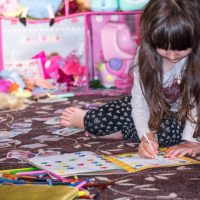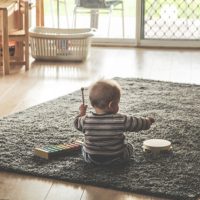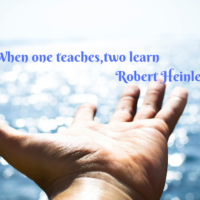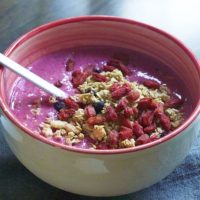
Can you think of some daily routines, toys, foods, social play that your preschooler really enjoys?
Could it be going to the park?


Maybe blowing bubbles?
and grocery shopping?

Can you make a list of all the things that your child really enjoys?
You probably are familiar with ABA therapy and the fact that is used to teach a variety of behaviours using rewards and consequences …
What if we combine ABA plus other strategies during daily routines while using these FAVOURITES list as an important to increase communication for your non-verbal preschooler?
This article will provide you with specific information on how to use daily routines to maximize communication and other skills for your non-verbal preschooler.
In addition to that , you can request the Free Preschool Rewards Chart.
Do you know that Routine based intervention using a child’s strengths and interests is demonstrated to be the most successful Early Intervention model for children?
WHY is that?
Because many of them they occur NATURALLY, numerous times during a day and Repetition is a key factor in learning; also, they are Predictable and Functional which means they can provide families with realistic, functional goals such as: eating using a spoon, take off shoes, wash hands, follow instructions…..
1. What are the daily routines?
Daily routines are simply naturally occurring events that happen consistently during a day or biweekly, weekly…
Examples: mealtimes, snacks, dressing, going to the park, playtime, grocery, bathtime, going to the mall, church, bedtime routine……..and many others
2. Which routines should I use? Can all be good choices?
A good starting point is your child’s favourites list of specific things: what routines are enjoyable for your child? Is it one of the daily snacks? or going to the park, swinging? or maybe playing with water at bath time?
You can use them all because when children are motivated they learn quicker and the process is effective.
Let’s say you have 4 meals (including snacks) during the day. Some of them are NOT suitable for intervention, maybe because you are very stressed, busy trying to get 2 kids out of the door to school ….then …don’ t use that time of the day. ..
Maybe you child is a very picky eater and the only thing you want is to get some food in ..then you may use snack time as a great opportunity to promote communication and other skills (using favourite snacks as motivation)
SO, overall you may start with a few routines your child enjoys that are more relaxing and not rushed for you, as well … e.g: snack, bathtime, dressing up as he likes to go to the park.
3. How can I use my child’s favourite games or toys?
If your child likes a tickle game with you or a family member, THAT is a good time to promote communication, for example: giving the opportunity to make a sound or sign to say “more” before you repeat the game or ..
-imitate a sound that you make
– fill in (“Go”) when you say ” Ready, set ….go”…these are a few ideas you can use for a favourite social play.
Note: It is important to make a difference between what your child” likes” ( plays functionally with ) versus an obsessive, repetitive play that is not functional.
SIGN UP to receive Your FREE Preschool Rewards Chart

For the list of favourites, use the routines, toys, activities that your child likes and play functional with, not in a repetitive manner.
4.Assess your child’s current skills and strengths and set some short term developmentally appropriate goals of learning
If you do not have an Early Interventionist to work with, you may use developmental screening tools such as https://www.asqonline.com/family/993-screening-family-access-open-asq-3-english/start
This Ages and Stages Questionnaire is provided free by Easter Seals and you can complete it online.
These screenings are helpful tools for parents to see the sequence of skills for each domain such as Language and communication, Cognitive development, Fine Motor Development, Gross Motor Development, Social and Self Help Skills; look and see where your child is and what are the next goals in one area of learning
5. Use the free routine cards provided and choose the strategies that match your goals of learning for your child
My post “11 Evidence-based Strategies you can use Today to Help your preschool non-verbal child communicate “ provides many important communication strategies, ready to use, to promote communication during the daily routines.
I have developed communication cards for mealtimes, bathtime and dressing time, as there are very functional, repetitive routines that you may find beneficial for intervention.
You will notice how easy is to create your own cards for other routines, as well as generalize the cards strategies to routines such as playtime:
e.g: choice-making between two toys
-copy sounds that the child makes using a favourite toy
–give less blocks so the child can ask for “more “(if the blocks are highly motivating) and therefore you can model “more” paired up with the sign
6.Set up the environment for success
Once you choose an activity or routine you for intervention, pay attention to the environmental factors that can obstruct learning
e.g: visual or auditory distractions, for example, TV, toys or other distractions…lights, noises….depending on your child’s level of focus …..a detailed post on this topic is coming soon…
7.Collect data, Reflect and Evaluate progress and outcomes
It is very important that you collect information on the plan of intervention you choose.
This should include :
1.Favourite toys , activities, foods (e.g: goldfish, tickle game, swing )
2. Routines chosen (e.g: playground, snack, dress up)
3.Goals of learning (e.g: making a choice, copy actions, sign “more”)
4.Strategies used (e.g: give less (at a time)of a favourite thing to promote communication)
5.Progress and outcomes (e.g: increase eye contact, attempt to sign, make a choice)
Conclusion
Using effective intervention strategies during your child ‘s daily routines is a process that can be learned by parents.
This post explains the benefits of Routine based intervention , steps involved and provides Ready-made cards to be used and modified(as appropriate) during the most common routines such as : dressing, mealtime and bathtime to improve communication for your non-verbal preschooler.
It is important to spend a little time to prepare your intervention such as gathering information about each area (Step7) e.g: highly favourite toys, foods, play….and take notes in order to be able to reflect, evaluate and adjust your goals.
Whether you start with 2,3 or 4 strategies (e.g: choice making) during different routines, a crucial aspect is to be CONSISTENT, practice daily, make it fun and natural part of that routine and most important PRAISE, PRAISE , PRAISE.










